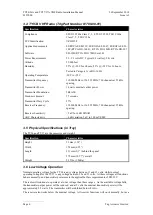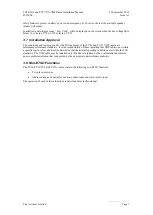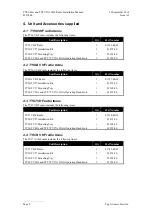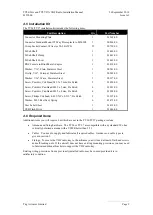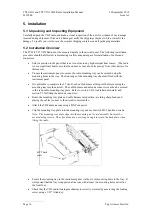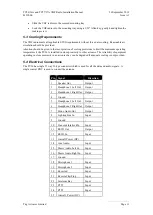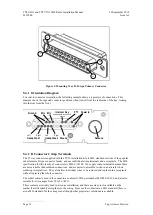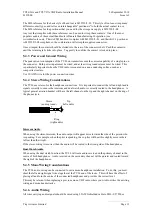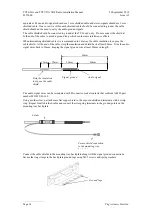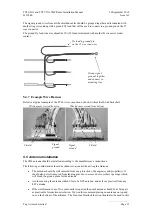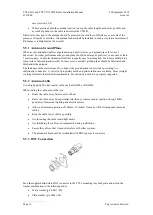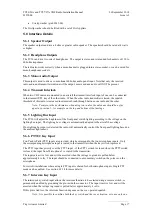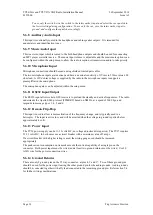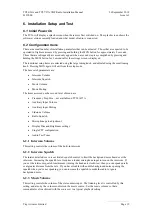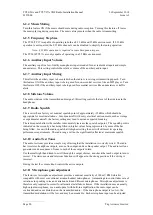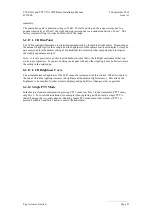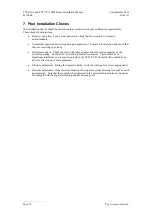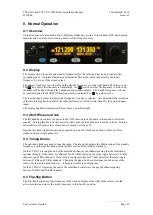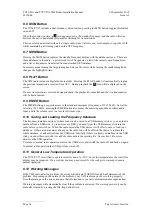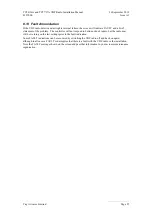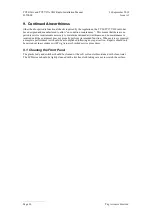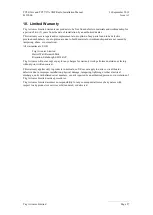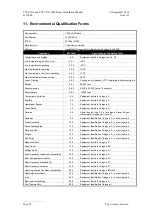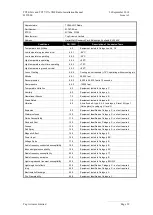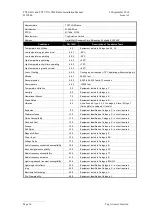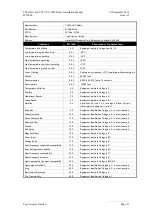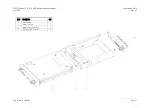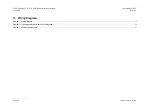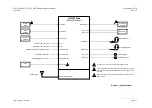
TY96/96A and TY97/97A VHF Radio Installation Manual
26 September 2018
01238-00
Issue AJ
______________________
Page 20
Trig Avionics Limited
6.2.4
Music Muting
Turn this feature ON if the music should mute during radio reception. Turning this feature off leaves
the music playing during reception. The music always mutes when the radio is transmitting.
6.2.5
Frequency Step Size
The TY96/TY97 is capable of operating in both an 8.33 kHz and 25 kHz environment. If 8.33 kHz
operation is not required, the 8.33 kHz channels can be disabled to simplify the tuning operation.
Note: 8.33 kHz operation is required in some European airspace.
The TY96A/TY97A are only capable of operating in a 25 KHz environment.
6.2.6
Auxiliary Input Volume
The auxiliary input is a low-fidelity monophonic input intended for nav radio ident inputs and simple
annunciators. This setting controls the relative volume of the auxiliary audio input.
6.2.7
Auxiliary Input Muting
This allows the auxiliary input to be muted when the radio is receiving or transmitting speech. Turn
this feature ON if the auxiliary input is being used for non-essential services, like an MP3 player. Turn
this feature OFF if the auxiliary input is being used for essential services like annunciators or traffic
alerts.
6.2.8
Sidetone Volume
The audio sidetone is the transmitted audio signal; this setting controls the level of the sidetone in the
headphones.
6.2.9
Radio Squelch
The receiver has a factory set nominal squelch point of approximately -95 dBm which should be
appropriate for most installations. In some aircraft with noisy electrical environments, such as vintage
or experimental aircraft, the factory setting may lead to nuisance squelch breaking.
The radio squelch allows the installer to moderately increase the squelch set point. The squelch point is
indicated on the screen by a bar being filled in, higher values being represented by more of the bar
being filled. Even with the radio squelch at its highest setting the unit will still meet its operating
performance requirements. The radio range will not be significantly affected at maximum squelch.
6.2.10
Audio Test Tones
The audio test tones provide a simple way of testing that the installation is correctly wired. The radio
has two stereo headphone outputs, a mono line output, and a cabin speaker output. The audio test tone
generator sends a sequence of tones to each of those outputs in turn.
Use the small right hand knob to scroll through the output choices, and check that each output in turn is
correct. The stereo music and intercom functions will appear in the wrong positions if the wiring is
incorrect.
During the test the volume knob controls the active outputs.
6.2.11
Microphone gain adjustment
The factory set microphone adjustment provides a nominal sensitivity of 100 mV RMS which is
compatible with most conventional aviation headset microphones. Automatic gain control takes care of
variations in speaking voice and variation between different microphones. Microphone adjustment is
therefore only required to correct for alternative installation choices. If the installation uses unusually
high output microphones, or an audio panel with built-in amplification, the radio input can be
overloaded and cause distortion on the transmitted audio. If the microphone output is too low, the
transmitted modulation will be low, and may be unreadable. Each microphone input can be adjusted
Summary of Contents for TY96
Page 2: ...This page intentionally left blank ...
Page 6: ......

